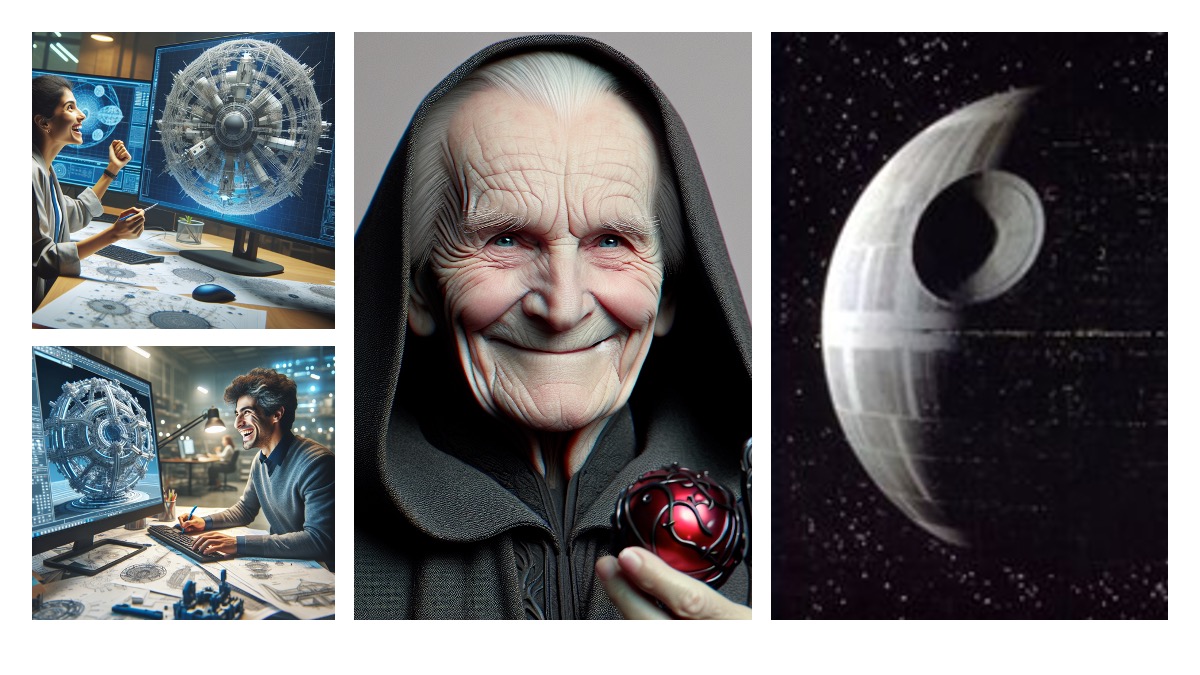Twinkle-Twinkle

When the first versions of CATIA and Star Wars appeared at the end of 1970s, they dramatically reinvented their respective domains. Since then, they have also developed a mystical connection to one another.
The former became a major boost to the Western aerospace and defense productivity vs. their Soviet opponents, while the latter mightily uplifted American soft power, inspired Western space research, and scared the Soviet Union into bankruptcy.
Forty years later, CATIA is a prominent participant in an extremely sophisticated, convoluted, and continuously evolving struggle to figure out the true form of the digital twin paradigm. Star Wars is an unbeatable franchise, with exciting visuals and an extremely well-detailed description of its technological, business and political landscape.
The Star War politics is a clear caricature on Roman history, with the psychopathic Palpatine overturning the Republic, dethroning the Jedi, and hunting down assorted righteous rebels. However, just as it was eventually disproved that Caesar had evil intentions, perhaps Palpatine’s depiction in Star Wars is simply opposition propaganda? Wasn’t he simply trying to bring some order in the world increasingly torn apart by oligarchic inefficiency, corruption and fanatical mutant do-gooders?
The various Star Wars factions design and manufacture very complex military equipment capable of operating across all relevant domains, with the Empire being evidently ahead of the game.
In the real 21st century military-industrial competition, companies making modern tanks, aircraft or warships are overwhelmingly using CATIA, NX or Creo, in combination with 3DX, TeamCenter or Windchill. Star Wars fandom has little to say on the subject, so we need to reverse-imagine the future enterprise ourselves.
- The Star Wars universe consists of numerous star systems, separated by unimaginable distances. Yet, both instantaneous communication and reasonably fast space travel are somehow possible.
- Countless design teams and manufacturing facilities are scattered around the world, clustering around access to natural resources, industrial facilities and talent.
- Space is simultaneously a great enabler and a major threat for manufacturing processes and operations, and therefore both a permanent feature and overbearing constraint for engineering design. True spaceships seem to be built directly in space, where safety protocols spell the difference between life and death.
- Dealing with mistakes in a virtual world is much easier than facing them in deep space. Relevant Star Wars military industry teams are certainly heavily invested in virtualization technologies, systems engineering and supply chain analytics, which in turn requires continuous data exchange via a massively distributed and highly resilient AWS-like hybrid infrastructure deployed through the space and on planetary surfaces. For the same reason, multi-dimensional search tech efficiency would be of utmost importance.
- Government certification would have to be rather strict (one need look no further than Darth Vader‘s uncompromising view on clumsiness), and security is a valid and perpetual concern.
The best example of the Star Wars digital engineering paradigm is the Death Star project. Despite some bad publicity, Death Star is arguably a marvel of requirements management, mechanical and electrical engineering, software development, and systems thinking.
Best practices are clearly in play, because the first one took 20 years to build, and the second was completed in only 4 years, roughly comparable to the modern aircraft carrier construction timelines (before the latest U.S. Navy news). I can easily imagine the Death Star digital engineering team continuously monitoring the situation, issuing new guidelines, and forcing better processes, methods and tools on everyone involved. AI is literally everywhere – smart robots and data tools are ubiquitous in all processes.
With regard to information exchange, everyone in Star Wars knows “basic English,” and spacecraft from different cultures, both friendly and adverse, seamlessly communicate with each other. Star Wars folks also clearly addressed the proprietary 3D data formats interoperability and long-term data archiving nightmare of 2024, probably with the present day equivalent of STEP or JT, supplemented by standard operating languages like SysML.
Considering the cumulative effect of distances, team sizes and composition, and unimaginable volume of application changes, advanced DevOps is a fixture in the Star Wars’ military-industrial complexes. Incidentally, DevOps for PLM will be a topic of Senticore‘s upcoming presentation at COE2024.
That’s it for now, ladies and gentlemen. For anyone who wants to discuss the immediate engineering and manufacturing concerns of their Death Stars, we are just a twinkle away.